Speed and productivity: that’s the holy grail of loading and logistics. To keep up with today’s supply chain demands, companies are adding loading dock capacity and they need to do it quickly. The kicker is that conventional loading dock construction is time-intensive, and the typical quick-ship forklift loading ramps on the market often fall short on safety. To ensure that your loading dock investment gives you the added return you need WITHOUT compromising employee safety, here’s what you need to know.
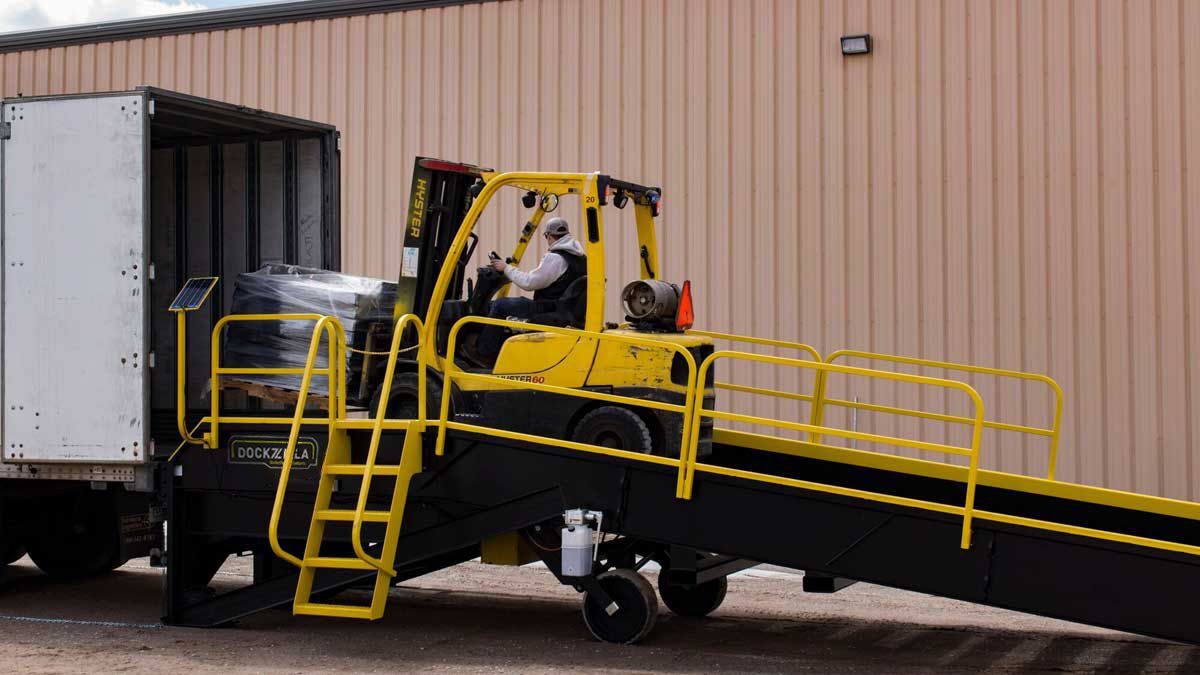
Hazards at the Loading Dock
Anyone with experience in loading and logistics knows that employee safety is paramount to a fast and efficient operation. However, hazardous working conditions can reduce confidence and stall productivity when forklift operators or loading crews are forced to overcompensate as they try to maintain a safe material handling environment.
While cast-in-place loading docks are built per OSHA & IBC safety standards, they’re not designed for speed or versatility. Typical commodity loading ramps can be delivered quickly to the jobsite; however, they often fail to meet critical safety standards right out of the box. Businesses don’t need to sacrifice safety to boost productivity. They can get the best of both worlds with a Dockzilla modular loading dock, that is engineered to pre-meditate and mitigate these common hazards:
- Unexpected trailer departure
- Employee falls or injury
- Forklift falling or snagging
- Difficult forklift transition to trailer
Read below to find out what you need to look for in a portable loading dock that’s built for safety.
Hazard 1: Unexpected Trailer Departure
During loading and unloading, forklift operators expect a loading ramp with stability that enables them to easily navigate and maneuver loads. Should they need to worry about what can occur if a truck unexpectedly pulls away from the loading ramp? To safeguard employees during every shift, look for these key safety features to prevent dangerous situations should a truck driver depart unexpectedly.
Avoid Ramp Free-Falls
Sometimes a worksite miscue or miscommunication can cause truck drivers to pull away from a loading site while a forklift is on the ramp. That’s why it is imperative that a portable loading ramp is self-supported with front safety legs. Most commodity ramps rely on the back of the trailer to support the full weight of the ramp, the forklift, and any load. If the ramp shifts or if the truck pulls away, the ramp (and anyone on it) crashes to the ground!
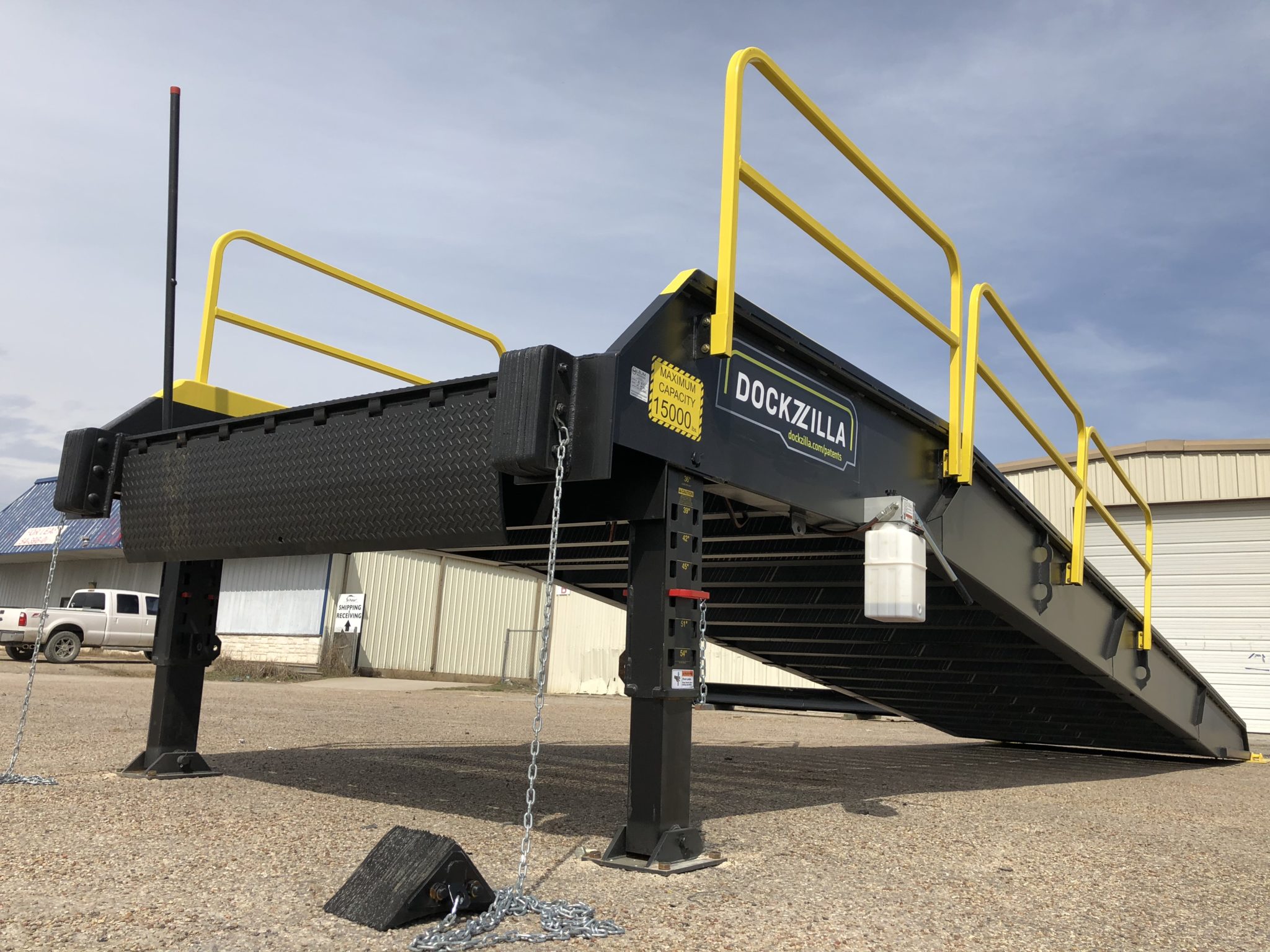
To avoid this free-fall scenario, Dockzilla’s modular loading docks are architecturally-designed heavy steel structures with sturdy front safety legs. This allows the ramp to fully support the weight of the ramp and anything on it – even if a truck pulls away without notice.
Slip Sliding Away
Even if a ramp has front safety legs, you’ll still need to consider its ability to remain in position during the rigors of daily loading. When a trailer backs into a portable loading ramp, the “trailer impact force” is transferred to the ramp which can cause it to slide out of position. When this repeated impact is not pre-addressed by design engineering, incoming trailers can push the ramp back several feet, creating additional hazards for your crew.
Dockzilla’s loading docks feature a patented impact-resistant design, so they’re able to absorb trailer impact force (just like a conventional concrete loading dock), and remain steadfast whether you’re unloading 10 or 100 trailers each day.
Hazard 2: Employee Falls or Injury
Conventional concrete loading docks are built per OSHA and IBC standards for personnel safety, so shouldn’t a portable loading dock or ramp provide the same level of protection? Unfortunately, important safety features are typically not included in the purchase of an off-the-shelf loading ramp and are instead, costly add-ons. When ramp manufacturers prioritize competitive pricing over employee safety, the customer and its employees are left vulnerable to injuries and potential healthcare claims. Be sure that you understand what safety features are included with your ramp investment.
Safety Handrails
The International Build Code requires guardrails above 30″ and OSHA requires handrails above 48″ of elevation. Walking on a ramp without handrails is like driving a car without a seatbelt. Being able to grip a handrail provides more stability for employees, so they’re less prone to tripping or falling. When designed to code, handrails can also safeguard forklifts while traversing up and down the ramp during loading and unloading.
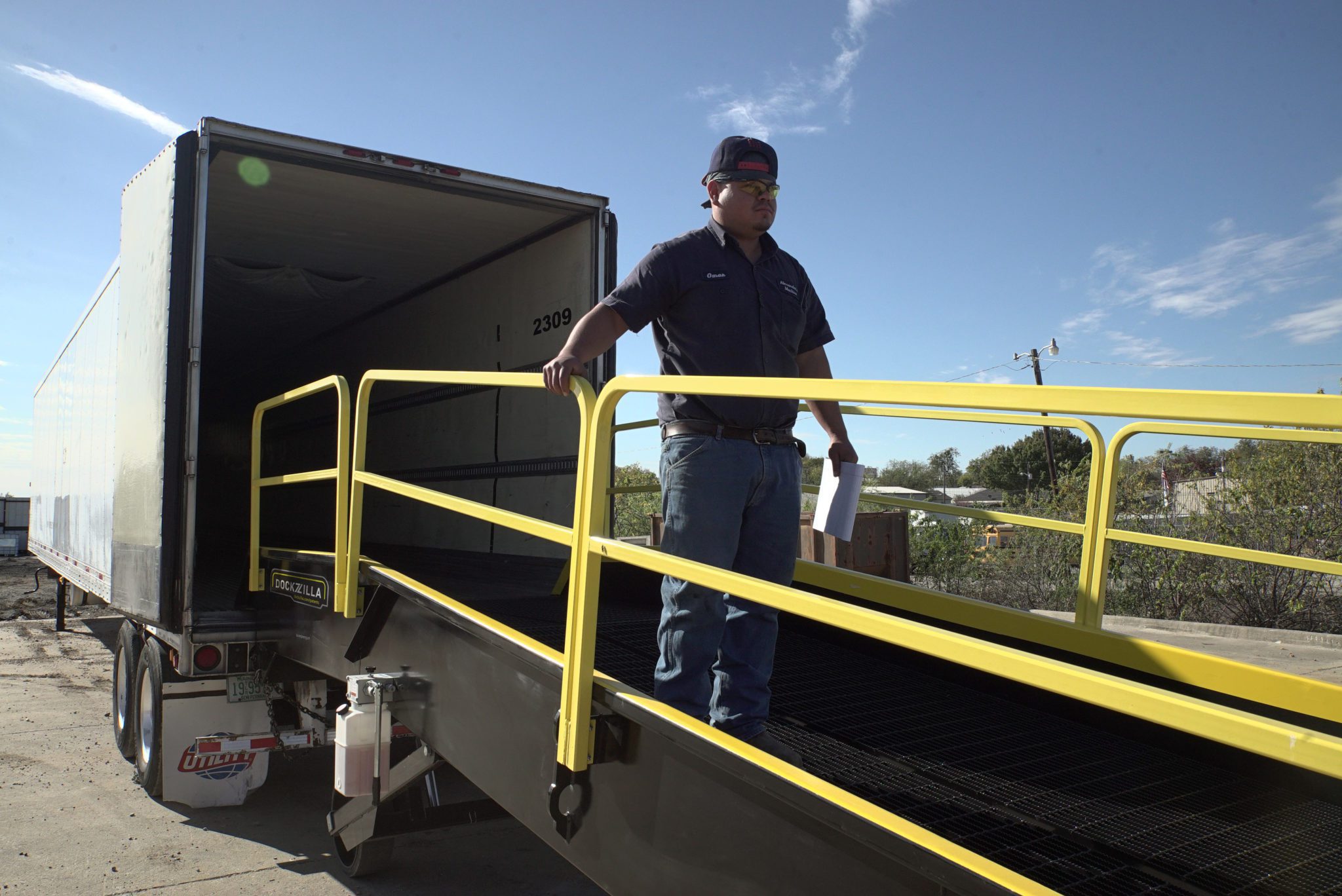
As a company design standard, Dockzilla loading docks are equipped with an unparalleled safety package that includes handrails/guardrails, extra tall sidecurbs, and wheel chocks per architectural and OSHA codes, right out of the box. This way, companies can deploy their loading dock on the same day it arrives without struggling with safety issues or stalling loading operations to order the essential safety parts needed to upgrade their ramp.
Elevated Offerings
Anticipate any additional measures that may be required by your safety manager or needed in the future, should the scope of your loading operations change. Inquire about the ramp manufacturer’s ability to deliver products when you need to elevate safeguarding measures, such as:
- Vehicle Restraints: Is it possible to add a vehicle restraint to your ramp to lock the trailer into place?
- Safety Signage: Does the ramp manufacturer offer safety signage or signals to improve communication between loading crew and truck driver?
- Access Stairs: Do they offer stairs or a ship’s ladder so that employees can safely access the trailer without needing to jump onto the ramp?
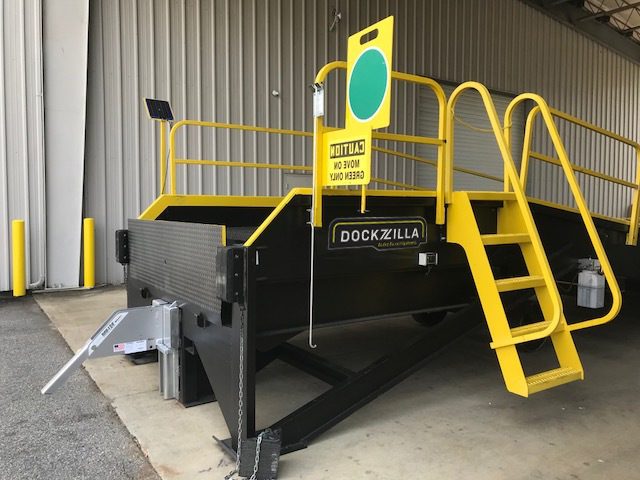
Dockzilla’s loading docks are the only portable offering that are engineered for compatibility with vehicle restraints. They can be easily added at time of order, or added on when you need it. We offer safety signage and lighting options to ensure a safe working environment, as well as heavy duty stairs to give personnel easy access to the trailer.
Hazard 3: Forklift Falling or Snagging
Forklift operators need to be extra careful when moving loads up or down a ramp. Visibility can be obscured by a full load and navigation can be challenging due to load size. These create two major hazards that a well-designed ramp should address:
- rolling over the edge of the ramp, and
- snagging the forklift or the load while moving on the ramp.
To protect operators on the ramp, look for a ramp that incorporates these features.
Side Curb Height
The side curbs on a ramp provide extra protection, helping to prevent the forklift from rolling off the edge. To be effective, curbs need to be tall enough that the forklift tire would be unable to roll over it. Unfortunately, many off-the-shelf ramps design their curbs between 4” to 6” high to save on material cost. This is way too short to protect a forklift from tipping off the side.
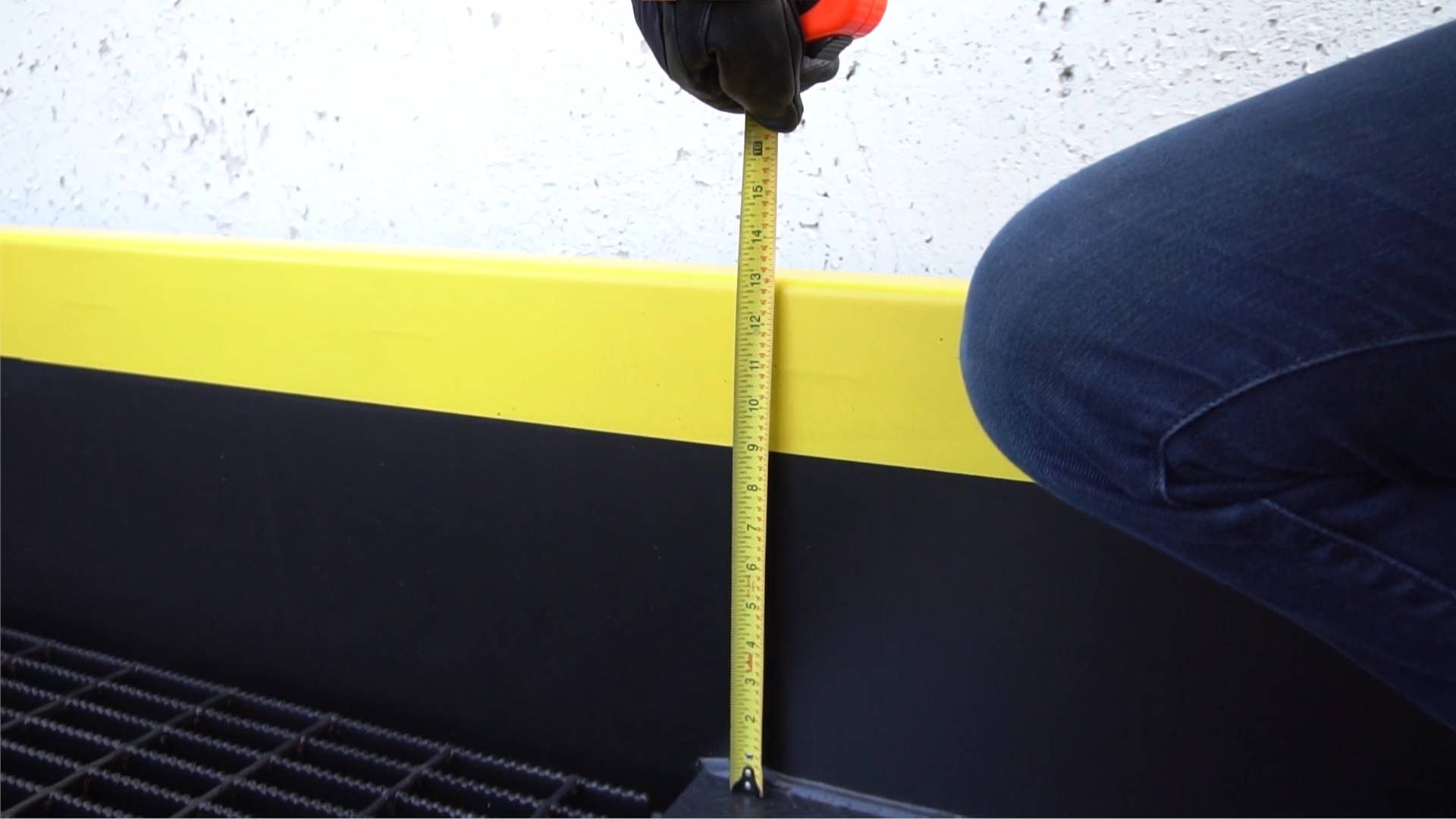
Dockzilla loading docks feature the industry’s tallest 13″ high side curbs. Taller than the typical 12” diameter of a standard forklift tire, these side curbs are far more effective at preventing forklift falls.
Solid Steel vs. Tube Steel Side Curbs
Curb design can also introduce a snagging hazard. It’s common for commodity ramps to include curbs built using welded steel tube. As the forklift operator maneuvers up or down the ramp, the forklift or the load can catch on the large openings in the curb and create a dangerous tipping hazard.
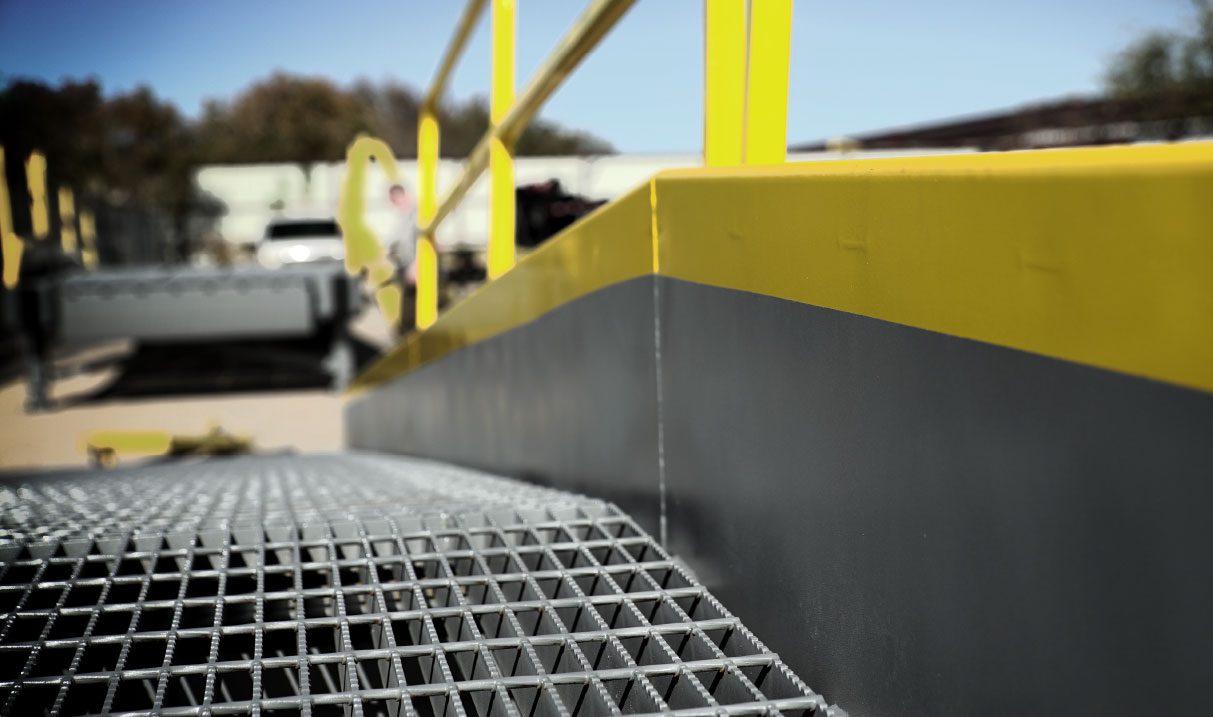
Dockzilla’s loading docks feature solid, snag-free steel side curbs so forklift operators can confidently and safely navigate the ramp without snagging the forks or costly loads on any openings.
Hazard 4: Difficult Transition to Trailer
The transition from a ramp into the interior of a trailer is especially important for forklift operators. Uneven surfaces between the ramp and trailer can create jarring bumps and generate instability. Plus, narrow ramps make it difficult for even the most experienced forklift operators to maneuver cargo in and out of the trailer.
These unnecessary challenges are a drain on efficiency and force operators to take extra precautions in an effort to remain safe. To maintain high efficiency AND safety, look for ramps designed to create a seamless transition from ramp to trailer.
Smooth Operation Dock Leveler
When loading and unloading a trailer, a smooth transition between the ramp and trailer is crucial to maintaining speed and safety. Many rigid mechanical dock levelers create a “speed bump” at this transition, forcing forklift operators to slow down to compensate for the uneven surfaces and avoid big weight shifts under load. Plus, placing a mechanical leveler takes extra physical effort, slowing down work and creating potential for injury.
Dockzilla loading docks feature integral dock levelers that float with the trailer bed as the forklift moves across, creating a seamless transition into the trailer so operators can expedite loading and avoid common injuries. In fact, Dockzilla offers the exclusive Cheesegrater® dock leveler with open bar grating and fully hydraulic operation. This means that employees avoid the physical exertion involved in leveler operation by simply pushing a button to raise the leveler and place it onto the trailer bed or to lower the leveler when loading is complete.
Wider is Better
When trucks don’t back into the loading dock perfectly on center, it creates a narrower opening for forklifts to maneuver into trailers. This makes it harder for operators to get into position and pick up or place loads, and 100% trailer cubing is nearly impossible. Typical commodity ramps build their standard ramps at only 78″ of clear width, which makes it the loading area a tight squeeze for fork trucks and puts operators at risk of jack-knifing the tires.
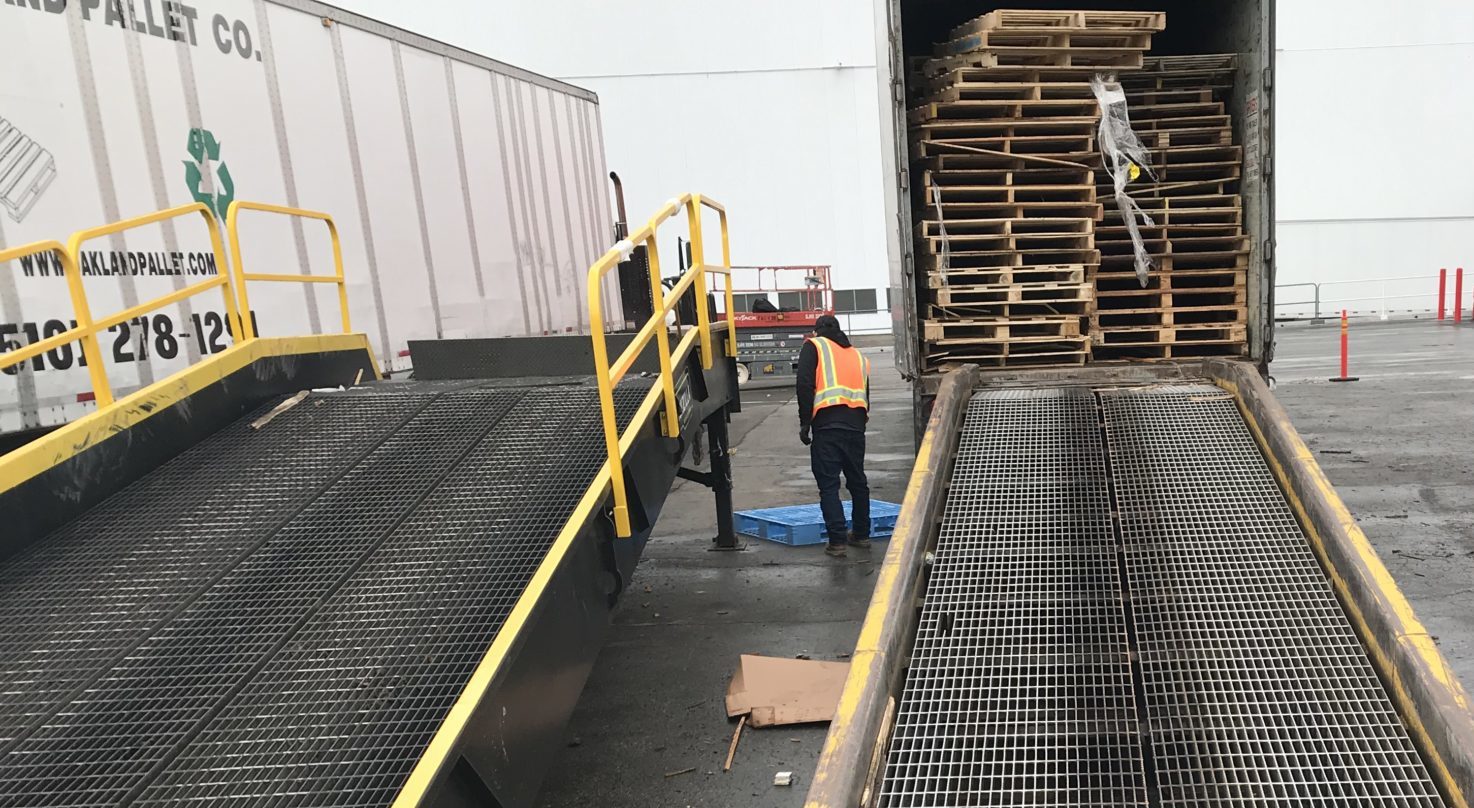
Each Dockzilla loading dock comes standard with 96″ of usable width, in line with the 8′ wide standard OTR trailers. This gives fork lift operators an additional 18″ of extra space to work with no matter how off center the trailer is, and makes it MUCH easier for operators to get into position and engage the load safely, WITHOUT slow and tedious adjustments.
A Confident, Safe Workforce is a More Productive Workforce

Modern businesses need to move quickly and innovate in order to stay ahead of the competition and manage increasing demands. From pop-up warehouses to quick-turn building expansion projects, these businesses are finding out that Dockzilla’s turn-key loading dock solutions enable them to increase efficiency and productivity without compromising on safety. That’s because every dock comes standard with industry-leading features and exclusive patents built right in. When you need to add loading capacity, Dockzilla loading docks are the fastest and safest way to boost productivity.
Get In Touch
Our team is ready to help you capitalize on untapped and underutilized opportunities at your facility or property. Reach out and a sales engineer will follow up to evaluate any loading dock or forklift ramp you’re considering, and to identify potential safety hazards or barriers to productivity. Let’s talk!

